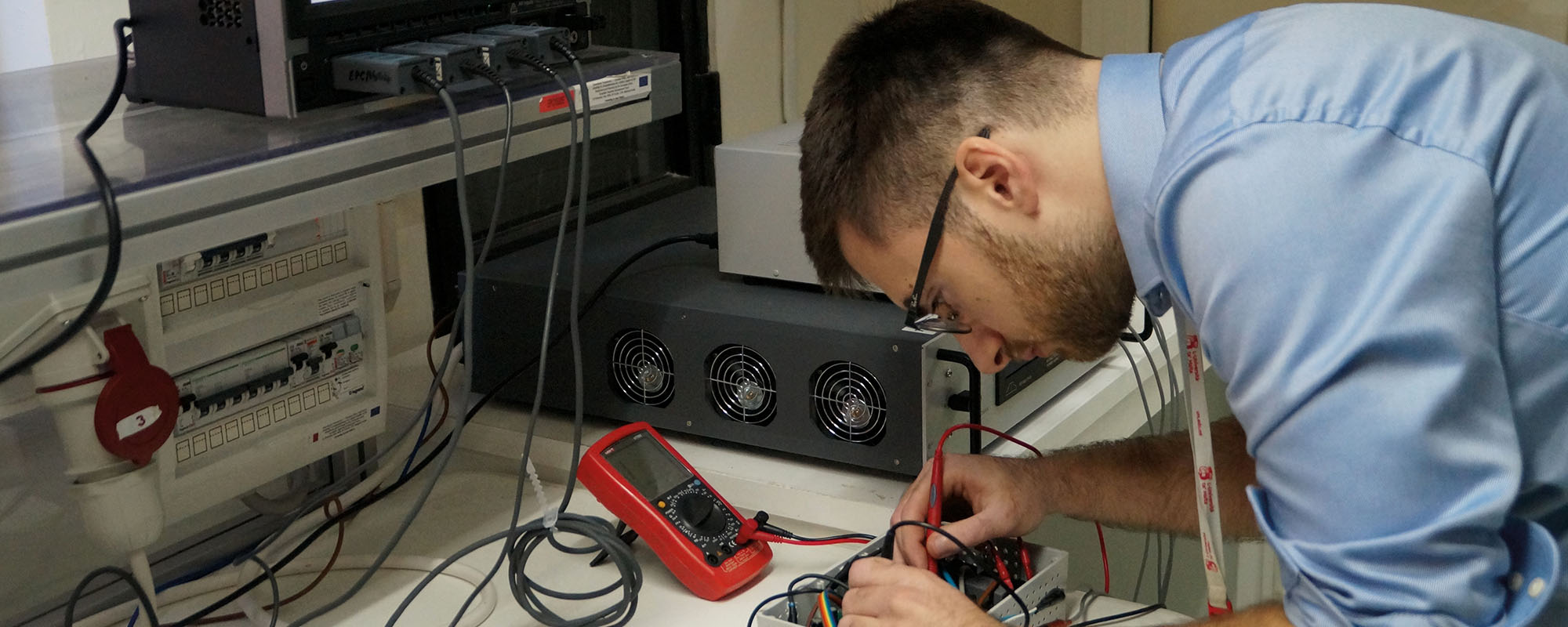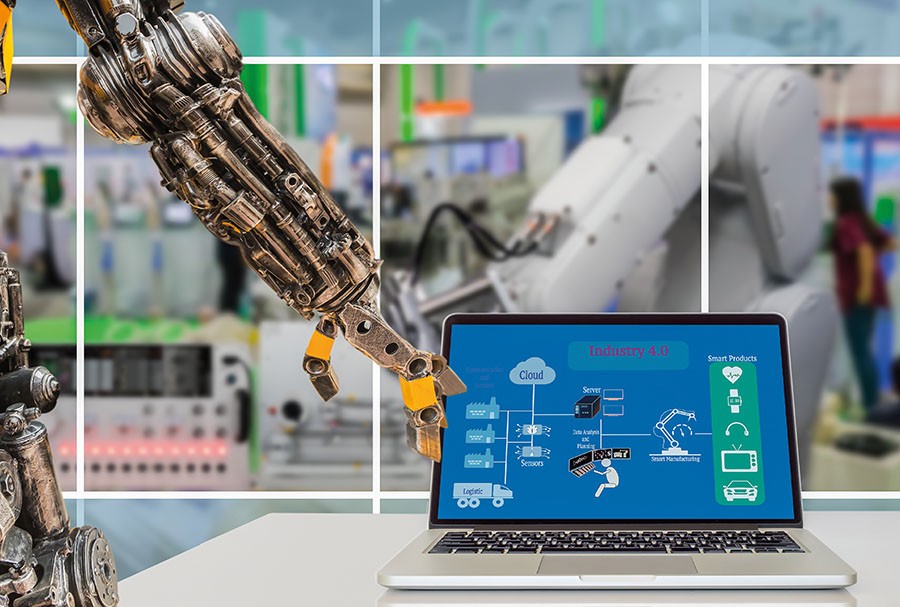From washing machines and vacuum cleaners to air conditioners and fans, household appliances all contain electrical motors, and we tend to take them for granted. However, appliances’ high starting currents can disrupt electricity supply and shut down a whole house. Daniel Lendi unpacks some of the hard work needed to fix this problem.
Continue readingSMARTAQUA: Acting fast on marine corrosion
Maintenance is not the sexiest aspect of business, but diligent corrosion monitoring in the oil, gas, and maritime industry could prevent massive environmental accidents. Inês Pimparel writes on behalf of AquaBioTech Group.

The maritime industry is going through massive developments. Traditional oil and gas remain powerful, as does the shipping industry, but there is a big rise in more sustainable businesses such as offshore wind and solar energy farms. Corrosion affects them all equally.
The NACE International Institute estimates that corrosion costs the maritime industry between $50 and $80 billion every year. Clearly, maintenance is an expensive practice, which might lead to neglect, resulting in catastrophic environmental incidents.
A low-cost, eco-friendly, and efficient solution is needed to monitor corrosion and enable earlier repair.
The industry currently monitors structures using ultrasonic or magnetic sensors. However, other solutions exist. The University of Aveiro (Portugal), the Norwegian research institute SINTEF, and the Maltese company AquaBioTech Group are working on SMARTAQUA, an innovative but simple approach that uses a special paint.

It uses environmentally-friendly nanomaterials to form a functional solid film over surfaces such as the support for a floating fish farm or the base of a wind turbine. Because the nanolayer goes directly onto the structure, it can combine colorimetric with magnetic analysis to detect corrosion as it happens.
The detection method will be tailor-made to the depth at which the metallic structure is placed to assess the integrity of the structures. Colorimetric detection is a relatively simple, user friendly, and reliable manner of detecting corrosion in splash zones. But in submerged structures, where colorimetric detection is not possible, the use of magnetic measurements would reveal the state of coated substrates.
The approach is not completely novel. The aeronautical sector is already introducing it. The AquaBioTech Group is performing toxicity tests on the nanomaterials using marine organisms such as microalgae and mussels. After this, the team will test the nanolayer’s efficacy on metallic structures in their offshore testing site close to St Paul’s Islands.
If this technology is proven safe and effective it will revolutionise the field of monitoring activities. It will reduce transport needs when assembling new offshore structures, indirectly reducing fuel use and greenhouse gas emissions. The commercial and environmental benefits are massive.
The project is highly collaborative. It brings together a small business, a research institute, and a university; testament that success can be achieved through co-creation, inclusivity, and sustainability—and that small advances can lead to a sea of change.
Note: This project was funded by the Research Council of Norway (through the programme of Petromaks II, project 284002), the Foundation of Science and Technology in Portugal, and the Malta Council for Science and Technology via the MarTERA – ERA-NET Co-fund scheme of H2020 of the European Commission.
Research to business plan: A metamorphosis
Author: Michelle Cortis

In recent years, there has been a shift in the relationship between research and commercial industries. Commercial viability almost always comes into question for ongoing research. Commercialisation can be a boon. When a research project has demonstrated its potential to become a viable business, funding opportunities increase, meaning the research can be turned into a product or service that people can use.
In 2018, as part of a Masters in Knowledge-Based Entrepreneurship, I analysed the commercial potential of an ongoing University of Malta project. I conducted an in-depth market feasibility study on Prof. Ing Joseph Cilia’s Smart Micro Combined Heat and Power System, a device that can be fitted into homes and offices to deliver heat as a by-product of electricity, reducing energy costs. Many EU countries are setting up incentives to make these systems more feasible and attractive to consumers.
For my dissertation, I developed a business plan for the research team. An engineer myself, and having earned a Masters by Research back in 2014, this was different to anything I had done before. My supervisors, Prof. Russell Smith and Dr Ing. Nicholas Sammut, helped me find the right balance between utilising my technical knowledge whilst also analysing the product’s commercial potential. Even my language changed through the process; I began to speak of ‘euros per day’ rather than ‘kilowatt hours’. I learnt to differentiate between technological features and what real benefits future users would gain.
Being presented with a physical product, initially one may assume that it is to be sold to customers, or protected through a patent and licensed to the private sector. However, my market analysis revealed new target audiences that had not been thought of before. Selling the device was not the only way to exploit the project’s commercial potential. What if we leased the product instead of selling it? Should we continue developing the product or is it already innovative enough? What if we developed a spin-out—would it be too expensive or is it worth the investment?
By analysing a project through a commercial lens, all these questions arise, pointing out potential ways to make a good project great. But what makes a good business plan great is when all these questions are answered.
The Project ‘A Smart Micro Combined Heat and Power System’ is financed by the Malta Council for Science & Technology, for and on behalf of the Foundation for Science and Technology through the FUSION: R&I Technology and Development Programme.
Are you carrying out research at the University of Malta which you think may have commercial potential? If so, contact the Knowledge Transfer Office on knowledgetransfer@um.edu.mt
What’s lurking on your lunch?
In our modern, fast-paced lives, more of us are turning to convenient ready-to-eat meals. But with short shelf lives and high demand, food safety tests just aren’t quick enough anymore. Dr Sholeem Griffin tells Becky Catrin Jones how an innovative collaboration between microbiology and computing is tackling this challenge.
Continue readingPolicing the seas
Living on an island in the middle of the Mediterranean, chances are that fish are an integral part of your diet. But do you think about how the fishing industry actually works? Kirsty Callan talks to Dawn Borg Costanzi about the need for safer, more ethical practices.
Continue readingThe rise of the academic entrepreneur
What is it that separates innovation in the lab from successful multi-million euro ventures that make money and have a positive impact on the world? The Knowledge Transfer Office’s Andras Havasi writes.
Continue readingPushing for Malta’s industrial renaissance
With all the cranes strewn across the Maltese landscape, it appears that the construction industry is one of Malta’s primary economic drivers. But there are other, less polluting ways of generating income. Dr Ing. Marc Anthony Azzopardi discusses MEMENTO, the high-performance electronics project that could pave the way for a much-needed cultural shift in manufacturing.
Continue readingInsurance industry roots

Everybody wants peace of mind. From the moment we lock the front door before going to work, to the second the car’s ignition turns off when we get back. Insurance makes that possible.
Insurance is one of the largest sectors of the Maltese financial services industry and a major pillar of its economy. Despite this importance, there is a research gap. Most historical records I referenced when looking into the history of insurance in Malta hinge on maritime history and historical accounts of bustling ports and the activity surrounding them.
My research aim was to initiate the first project actively chronicling the key contributors and events in Malta’s insurance industry. I started with methods used by the earliest inhabitants of the island, tracing its roots in maritime trade, followed by the emergence of more complex and sophisticated insurance services and products.
Reference to insurance in Malta can be traced back as early as 750 BCE, the time of the Phoenicians. The earliest known insurance contract I found was dated to 1524, around 12 years before the oldest contracts known prior to this study. Intra and extra-territorial socio-political, economic, and regulatory events have strongly contributed to the development of insurance and have forged it into the industry it is today.
Through a series of semi-structured interviews, backed up by findings from empirical literature and archival research, I made some key discoveries. For example, after the Knights of St. John settled in Malta, Maltese farmers fearing a Turkish invasion sought security (insurance) from their landlords through contracts. I also found that in the 1980s, a very specific insurance existed for racing horses. These valuable insights are being published by Emerald publishing (London).
Understanding the past’s lessons is the best way to prepare for the future.
This research was carried out as part of an M.A. in Insurance and Risk Management, Department of Insurance, Faculty of Economics, Management and Accountancy, University of Malta.
Author: Mark Lawrence Zammit
Mind the Gap
The world is changing. Technologies are developing rapidly as research feeds the accelerating progress of civilisation. As a result, the job market is reacting and evolving. The question is: Are people adapting fast enough to keep up? Words by Giulia Buhagiar and Cassi Camilleri.
Mur studja ha tilħaq.’ (Study for a successful future.)
From an early age, most Maltese students are conditioned to think this way. You need a ‘proper education’ to land yourself a ‘good job’. But students graduate, and with freshly printed degrees in hand, they head into the job market only to be disappointed when the role they land seems unrelated to their degree. Yet vacancies are ready for the taking; there are many unfilled jobs in the STEM fields, which create 26% of all new vacancies according to recent research from the National Statistics Office.
So, if there are vacancies available, what is the problem? A skills gap.

Academic qualifications do not guarantee that graduates have the right skills for work. At a conference addressing the skills gap organised by the Malta University Holding Company (MUHC) and the Malta Business Bureau (MBB), Altaro Software co-founder and CEO David Vella confirmed this problem. In previous years, Altaro mostly employed experienced developers; however, increased demand led them to realise that there weren’t enough of these candidates out there for them.
To fill those roles, they extended the call to younger people, but Vella found that they were not fully equipped and ready to go. This was when he realised that they needed to change tactics. ‘Now we realise that we need to start hiring junior people and build up their skills.’ Investment needs to be made by both sides.’
What every relationship needs
Better communication between business and academia could improve the skills gap. However, this kind of engagement is easier to manage in some institutions and industries than others, and bringing those worlds together poses many challenges. At the same conference, MUHC CEO Joe Azzopardi noted how start-ups and small businesses often do not have the resources to organise such exchanges. The wall between them and students is a difficult one to get over. However, there is a new initiative seeking to remedy this situation.
Go&Learn is a project bridging education and industry through an online platform that effectively catalogues training seminars and company visits in a multitude of sectors, for students and educators alike. The initiative has garnered a slew of supporters. Sixty companies from all over the world are listed on the site, including some local names: Thought3D, ZAAR, and Contribute Water, to name a few. This year was Go&Learn’s third edition, and with 17 European regions from across 10 countries involved, it focused on the STEM fields. In Malta, the team behind Go&Learn, also a collaboration between MUHC and the MBB, have worked together to create two new programmes.
One was dedicated to ICT for business, leisure, and commodity. It saw students visit and learn from local companies Altaro, Scope, MightyBox, Trilith, and Flat Number. Students said that the visits helped them achieve a better understanding of the sector and its nuances. ‘For us students, the fact that we are exposed to the internal working of a business’s environment, it’s an eye-opener,’ said University of Malta (UM) student Maria Cutajar. The second was related to food, involving Elty food, Benna, Fifth Flavour, Da Vinci Pasticceria, and Contribute Water. In this case, the opportunity even attracted foreign students. Go&Learn is acting as a vital bridge between education and industry that can help to minimise the skills gap.
The skills gap exists for many reasons: prejudices towards certain industries, lack of information available on others, and much more. However, education can play an important part in fixing this problem.
Bringing STEM to life
The skills gap exists for many reasons: prejudices towards certain industries, lack of information available on others, and much more. However, education can play an important part in fixing this problem. Currently, local systems are falling short of reacting quickly and addressing new needs in industry. A lot of attention is placed on short-term goals such as exams and assignments, rather than the bigger picture and real-world tasks. This kind of attitude in science education tends to be exacerbated by the notion that its subjects are for ‘nerds’ and ‘brainiacs’. This can be a daunting prospect for young children who don’t see themselves as ‘smart enough’. It can drive lots of young talent away from STEM subjects.
 We need to bring fresh talent into STEM by showing how exciting, accessible, and relevant the field actually is. The solution, UM Rector Prof. Alfred Vella says, is to start right at the beginning: ‘We need to inspire teachers.’ This includes attracting the best teachers by providing appropriate salaries. Through education, we need to change the impressions given to children about science and what it means. ‘When I was younger, they used to tell me, why do you want to do science? Wouldn’t it be better to be a doctor? Engineers were seen more as grease monkeys,’ Vella said with a smile. Science should be engaging, inspiring, and fun. For this reason, he commends ESPLORA as being ‘the single most important feature in Malta.’ Vella believes classrooms should be an extension of the ESPLORA centre in their efforts to bring science to life. In addition to teachers inspiring future generations, parents also need to see STEM jobs as a good career for their children, and businesses need to show parents that exciting careers are available by pursuing STEM subjects. Without this, early encouragement might be fruitless.
We need to bring fresh talent into STEM by showing how exciting, accessible, and relevant the field actually is. The solution, UM Rector Prof. Alfred Vella says, is to start right at the beginning: ‘We need to inspire teachers.’ This includes attracting the best teachers by providing appropriate salaries. Through education, we need to change the impressions given to children about science and what it means. ‘When I was younger, they used to tell me, why do you want to do science? Wouldn’t it be better to be a doctor? Engineers were seen more as grease monkeys,’ Vella said with a smile. Science should be engaging, inspiring, and fun. For this reason, he commends ESPLORA as being ‘the single most important feature in Malta.’ Vella believes classrooms should be an extension of the ESPLORA centre in their efforts to bring science to life. In addition to teachers inspiring future generations, parents also need to see STEM jobs as a good career for their children, and businesses need to show parents that exciting careers are available by pursuing STEM subjects. Without this, early encouragement might be fruitless.
With more young people taking up STEM subjects, the potential ripple effect will be vast. These future professionals will be able to conduct more research. The enormous benefits to be reaped from having more people excited about STEM subjects means the burden does not fall solely at the feet of teachers and parents. ‘It is also the job of businesses to show the relevance and benefits of STEM,’ says the CEO of the MBB, Joe Tanti. Go&Learn is providing an arena for business to interact with students and for universities to use their influence positively.
Looking ahead
From children’s classrooms to the skills gap in our economy, everything is intertwined. We need a multi-pronged approach to tackle as many aspects as possible and implement lasting changes. For one thing, we need to take a good look at our education system and how it treats STEM subjects. We also need to bring business and education together, enabling them to communicate more effectively. With Go&Learn starting this much-needed shift, the door is open to more innovative initiatives. Who’s in?
Authors: Giulia Buhagiar and Cassi Camilleri
Designing the factory of the future
With consumer demand reaching new highs, automation in industry is essential. Dr Ing. Emmanuel Francalanza writes about his contribution to streamlining the complex factory design process for contemporary engineers.
From smartphones, to smartwatches, smart cars to smart houses, intelligent technology is inescapable. Busier people have made efficiency a valuable currency and thus the ‘Internet of Things’ (IoT), and its plethora of connected devices, has become a necessary part of everyday life. The application of this model goes way beyond the regular consumer, however. Continue reading







